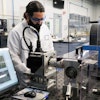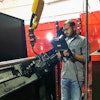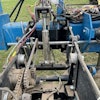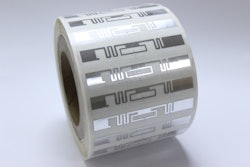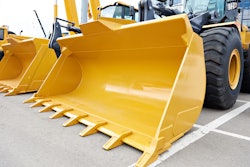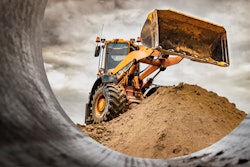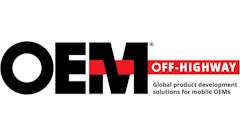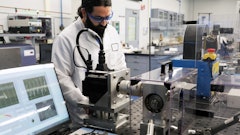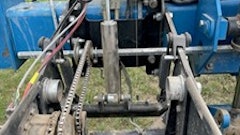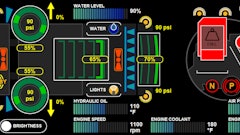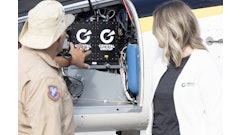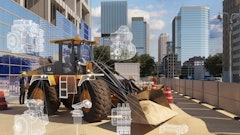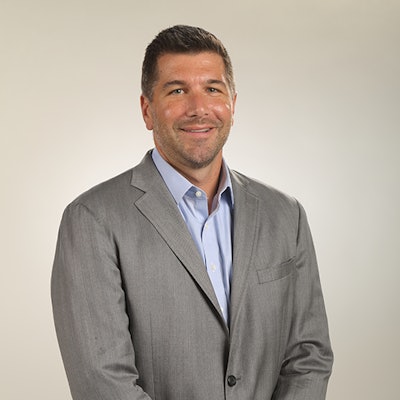
Senior Vice President and President of Electrification Briggs & Stratton Vanguard
To assess emerging trends and the current and future OEM landscape, our team spoke with experts throughout the industry. In our conversation below, Briggs & Stratton Vanguard's Senior Vice President (SVP) and President of Electrification David Frank shares his view of the industry's greatest challenges and the solutions and strategies OEMs can employ to tackle them.
In his current position, Frank oversees Briggs & Stratton's strategic, financial and operational performance. Since joining the company in 2016, Frank has served in numerous senior leadership roles, including six years as vice president of global commercial engines and power sales and vice president of electrification.
Read on for Frank's insights into the state of the industry.
1. What challenges most affected the mobile OEM landscape in 2023?
OEMs in the off-highway were navigating a number of challenges in 2023 including a still-fluctuating supply chain, labor shortages and high interest rates. On top of this, OEMs are balancing the need to service the market and its current demands against the need to invest in future innovations and technologies. The adoption of these innovations — like electrification — remains a moving target as the industry works through factors like infrastructure considerations and upfront costs versus total cost of ownership. Ultimately, OEMs realize that they need to have a battery power offering and that now’s the time to figure out how to get there. All of these external pressures and hard-to-control factors make it even more important for OEMs to collaborate with other experts in the industry. At Vanguard, we view ourselves as power application experts that can serve as an extension of OEM engineering teams. Together, we work to tackle these challenging situations and produce the best solution for the end user.
2. What are your predictions for the mobile OEM landscape in 2024?
We’ll continue to see more industries shift to fully battery-powered solutions as more electrified products come to market. The continued adoption of electrification will be driven by benefits like ease-of-use, low noise and low- or no-maintenance equipment. I think the off-highway industry will continue to look to innovations in automotive technology that will pave the way for future advancements for our market. Automakers are investing heavily in EVs, and these breakthroughs often influence off-highway machinery advancements and offer benefits such as lower emissions, improved efficiency and reduced operational costs. Because of this, we’re watching news and trends from the EV space closely.
3. Where do you see the most potential for improvement or advancement in 2024?
As more battery-powered equipment comes online, there will be endless opportunities to harness insights based on all the data the machine is now capturing through a battery management system (BMS). In addition to constantly monitoring voltage and temperature to ensure safe and efficient operations, a BMS gives valuable information about equipment performance, efficiency and user behaviors. All this data can be used to inform everything from engineering decisions, predictive maintenance to how end users are trained when being introduced to a piece of equipment. On top of that, battery system solutions to help companies electrify their equipment faster is going to be critical to move the market forward.
4. What will be the biggest challenge for OEMs and the industry in general in 2024?
As we round out 2023, the geopolitical and global economy is still facing significant uncertainty and a lot of this uncertainty is driven by ongoing supply chain challenges. Vulnerabilities of global supply networks exposed by the pandemic have been exacerbated by transportation bottlenecks, dual supply and onshoring and labor shortages. All of this has led to price fluctuations and difficulty predicting costs at all levels of the supply chain. I think we will see more of this in 2024 as there is a rebalancing of business demands and supply chain practices. The companies that can put a heavy focus on this have an opportunity to create more value and win in the end.
5. What factors should engineers and their companies consider when making decisions in the mobile OEM space in 2024?
Our most important advice to OEMs setting out to electrify a piece of equipment is that “one size fits all” solution when it comes to battery power in the off-highway industry. Each piece of equipment will require something different to gain true efficiency. Along with taking into consideration the type of battery and its chemistry being used in the application, OEMs also need to consider battery sizing. Proper battery sizing is critical when it comes to ensuring safe operation and optimal performance. When it comes to electrification and transitioning a piece of equipment to battery power, both OEMs and end users often ask us “How long will it run?” And as frustrating of an answer as this is, it truly depends. People need to understand that work conditions play an immense role in the runtime of a product, making it hard for OEMs to give a specific number. Another crucial element of the design and engineering process is testing. As prototypes evolve closer to production models, thorough and rigorous testing is essential. Your electrification partner should work closely with you during the testing process, whether they come to you or take your product to their own testing facility. What’s most important is to identify and resolve all issues before manufacturing — and especially before end users put your products to work in the field.
6. Please highlight ONE recently introduced product from your company that meets a specific, pressing need in the mobile OEM space, and describe briefly how the product is uniquely designed to meet that need.
The Vanguard® Lithium-Ion 48V 1.5kWh* Commercial Battery (Si1.5).Recently named one of OEM Off-Highway's Top New Products of 2023, the Si1.5 was engineered with original equipment manufacturers (OEMs) in the construction, agricultural, lawn & garden and industrial segments in mind. Built tough with a diecast aluminum casing that adds rigidity and reduces vibration and shock response, our customers can be confident the battery will operate safely and powerfully on the most challenging jobsites. It also gives end users the ability to swap freshly charged battery packs leading to minimal downtime and overall lower total cost of ownership. The Si1.5 is designed, engineered and assembled in the USA.
7. What are some of your company's priorities in 2024 with regard to electrification, automation, innovation, emission reduction and/or other emerging trends?
We are committed to helping our OEMs accelerate their electrification portfolio. Easy integration is key as we grow our lineup of innovative, diversified power solutions to help meet the application needs of our OEM partners as they work to realize their electrification goals. We recently expanded our offerings to include motors and motor controllers, which will allow us to offer the market a fully integrated battery system. Our new MVG Series Motors and MC Series Motor Controllers include different power options to meet voltage needs across equipment sizes. The MVG Series includes the MVG1500, MVG2200, MVG3000 and MVG4000 Motors, and the MC Series includes MC2000, MC4000 and MC8000 Motor Controllers. With the addition of motors and motor controllers to its product lineup, Vanguard will be able to meet electrification needs across applications, including compact equipment like blowers and walk-behind trowels as well as pumps, sprayers, power rakes and more. There is a lot of complexity when it comes to integrating a battery and motors and motor controllers. But, when it’s done right, everything is communicating and working together the way it should be and creates the best end-user experience. This end-to-end solution is truly unique to our industry and the markets we serve, so we think it’s going to be a game-changer for our OEM customers.
For additional insights on the state of the industry and what's to come in 2024, click here to read more.

